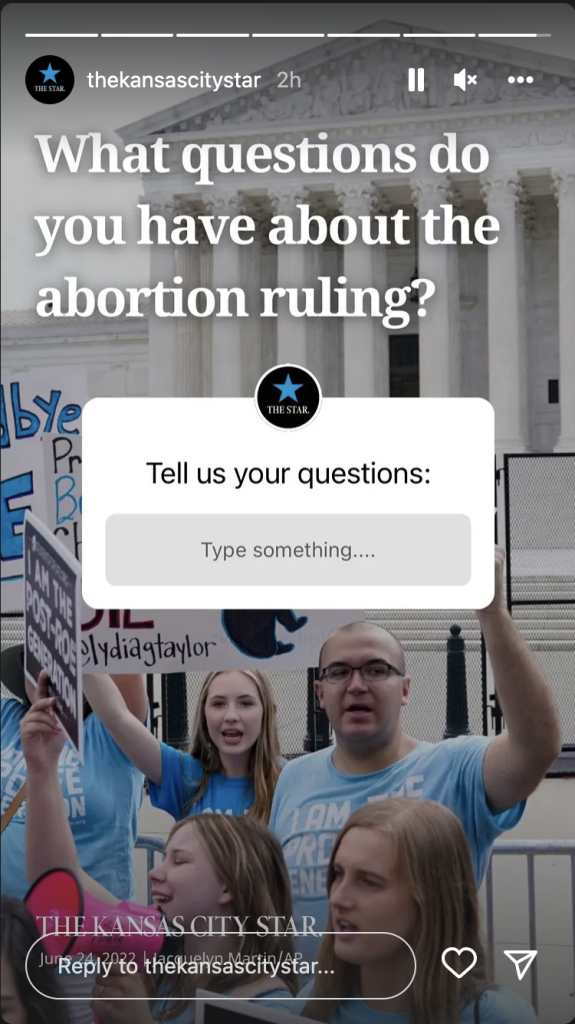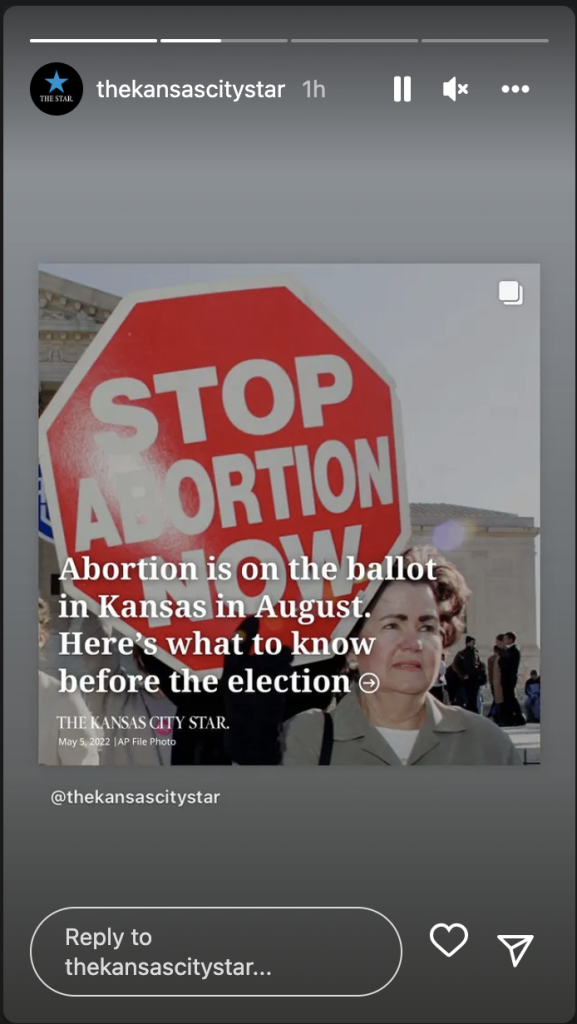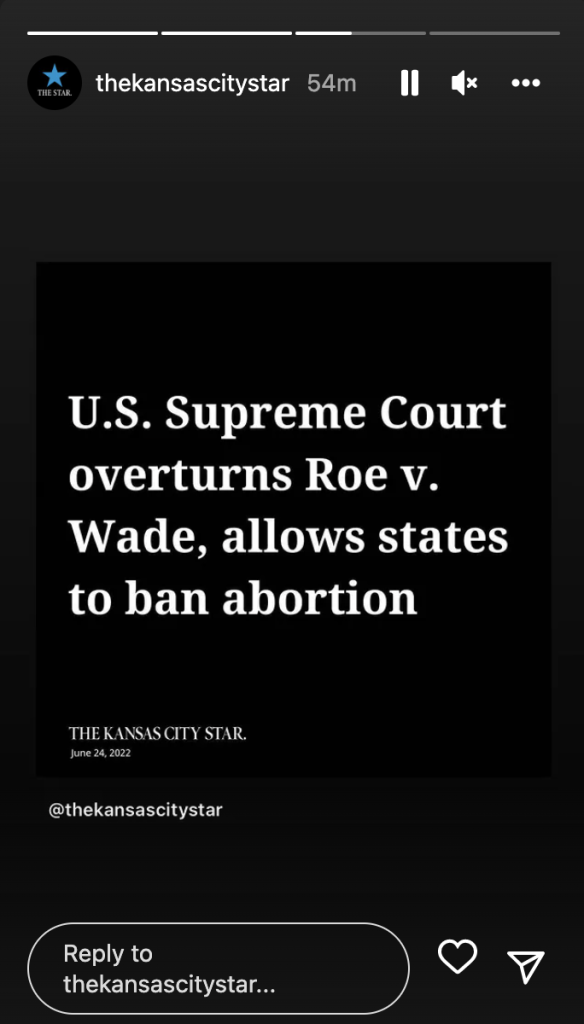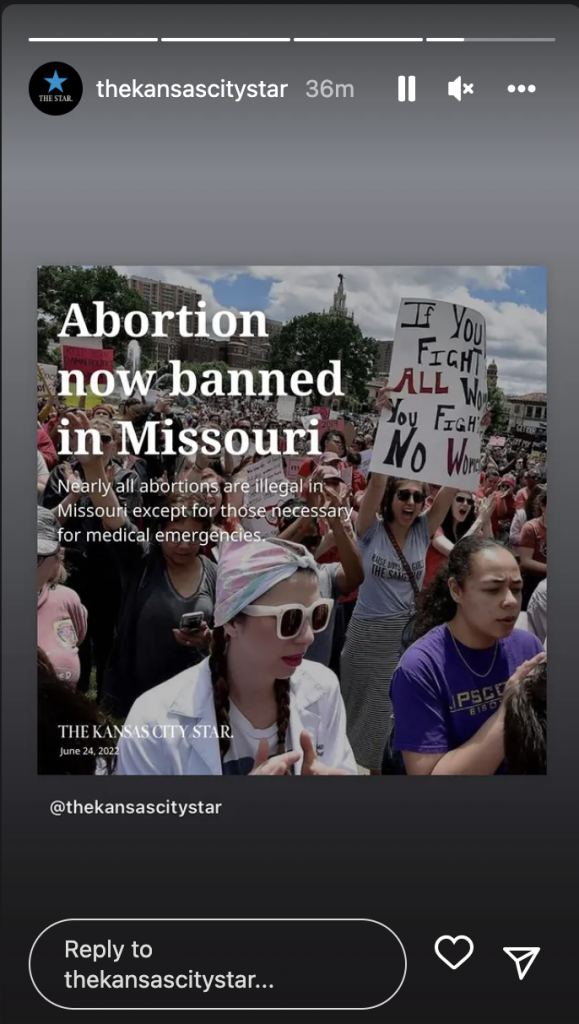After the Supreme Court released its opinion announcing the overturning of Roe v. Wade, Missouri
immediately enacted its trigger ban, banning nearly all abortions in the state except for medical
emergencies. As an audience intern for the Kansas City Star, I helped the team create comprehensive coverage to identify reader needs and combat misinformation we were seeing about the new law online.
While I was primarily responsible for creating Instagram and TikTok content and monitoring social media for questions from readers, I worked with and watched other members of the audience and service journalism teams as they created a content strategy for service journalism pieces and recirculation across our newsroom.
Service Journalism Pieces
Because our audience and service journalism teams team knew the Dobbs decision was coming from the Supreme Court leak, we were able to plan coverage ahead of time when the trigger law went into effect. Our team was ready with coverage as soon as the ban was announced, including the breaking news story with a “Read more” section that aggregated past abortion coverage.
Since Kansas City straddles the Missouri-Kansas border, our coverage needed to address differing laws in both states. I learned from our service journalism and audience teams as they used Google Trends and connections within the community to write service stories about questions people were asking. This included the ways abortion access would change in Missouri and Kansas, the definition of a medical emergency in Missouri’s abortion ban and explaining restrictions on abortion in Kansas, where the procedure was still legal.
Breaking News Coverage on Instagram
In the immediate aftermath of the ban, we prepped and posted informational graphics about the enaction of the ban, which were up within minutes of the new law. The graphic announcing the ban generated the Star’s highest social engagement in all of June.
I scripted and shot an Instagram Reel with a fellow intern to explain the trigger law and address misinformation we were seeing on social media and in search. This reel reached 79,211 accounts and was our second-highest viewed and liked Reel during my internship.
I also created a swipe graphic answering comparable questions as this Reel to reach as many readers as possible and ensure we were answering the questions of our audience.
Finally, I shared past and current posts to our Instagram Stories. It was important to put information on
Instagram Stories, as many users check their stories for information before scrolling through their feed, if
they scroll at all. I created a graphic to share on our story with a sticker for readers to ask questions about the ruling. The sticker was used to gather questions for future stories to explain the ban and to further build trust with our audience.




Combatting misinformation in the aftermath
While our initial coverage was focused on explaining the trigger law, we quickly saw misinformation spreading about the abortion ban. I saw concerns on social media and in search trends that the abortion ban would limit access to emergency contraceptives like Plan B and IUDs. We quickly created service journalism stories to explain that emergency contraceptives and birth control were still available.
I also created an Instagram Reel to address the misinformation based on the Star’s reporting. This video was created in Adobe Premiere.